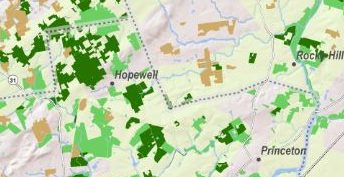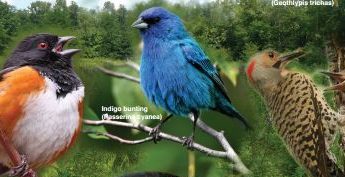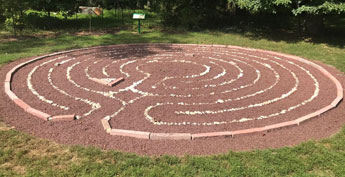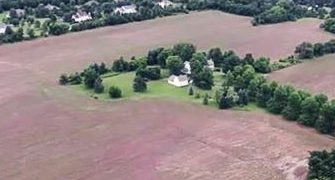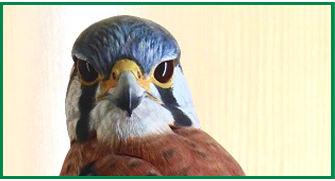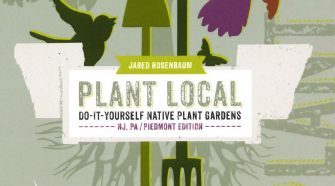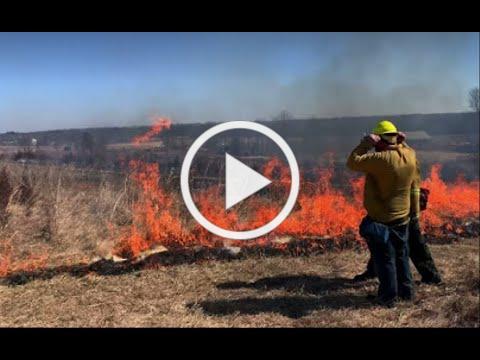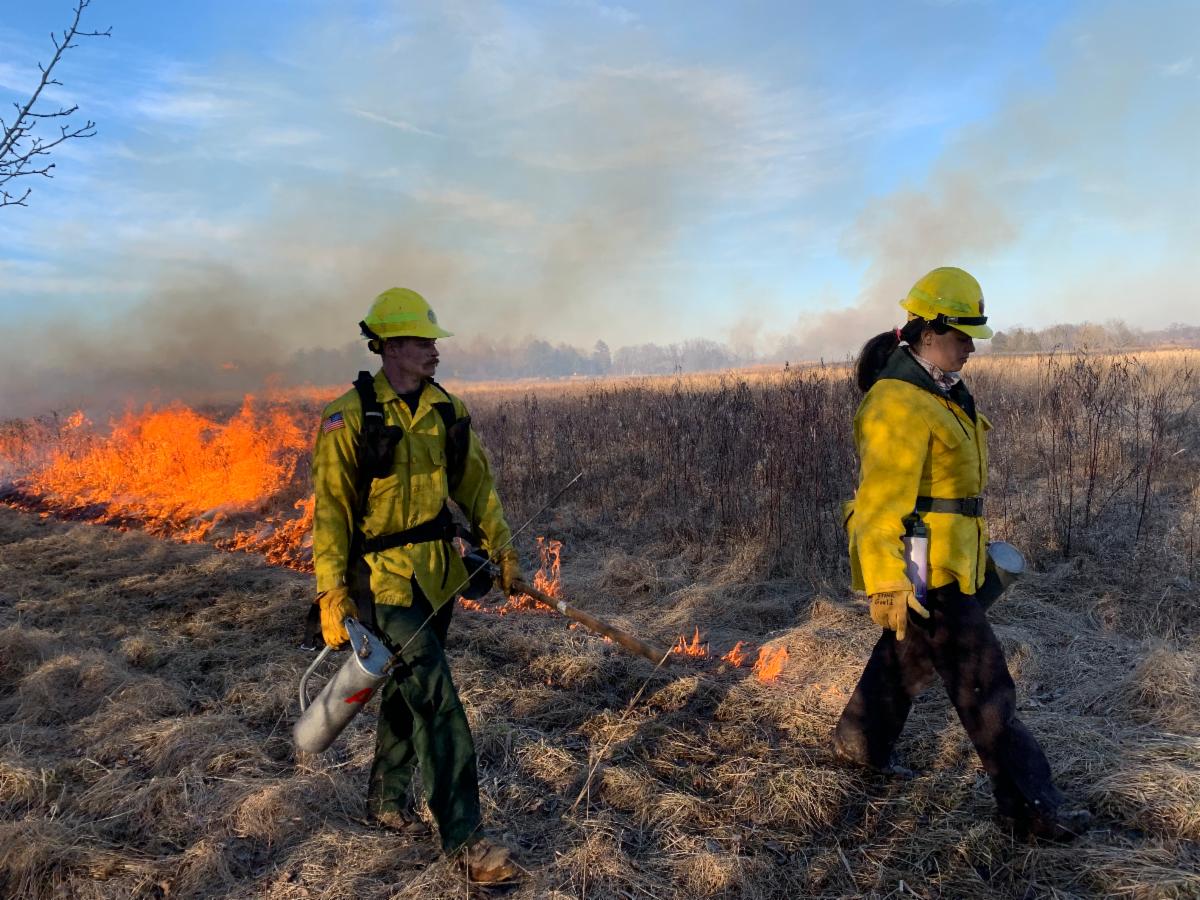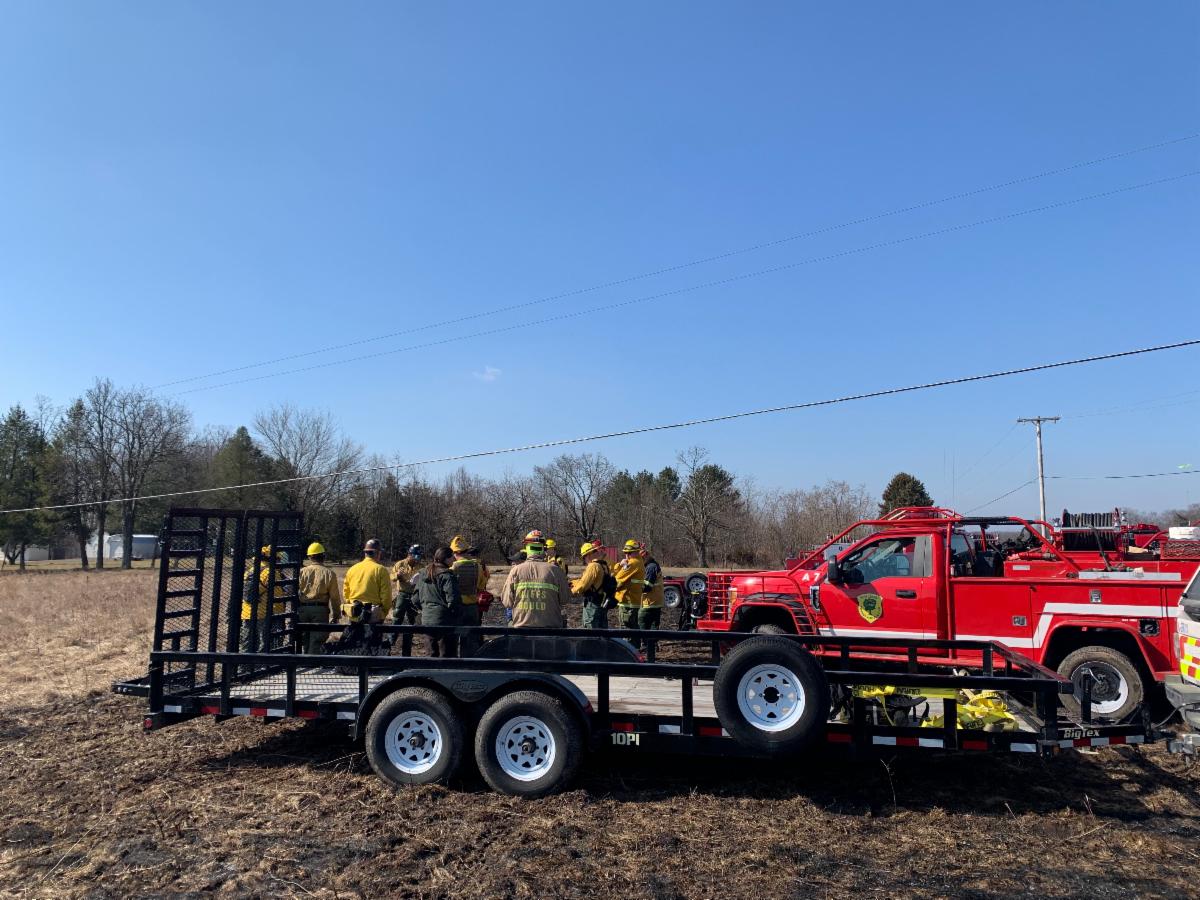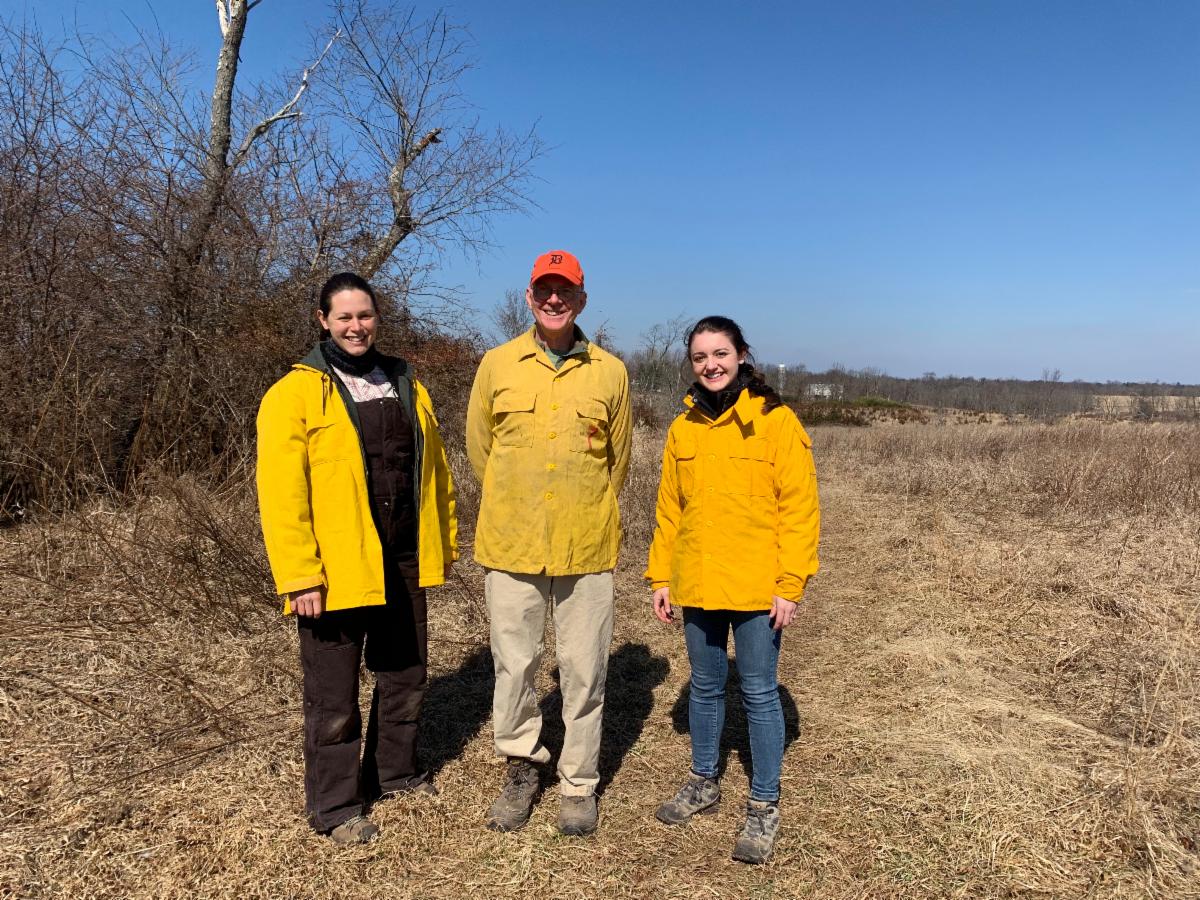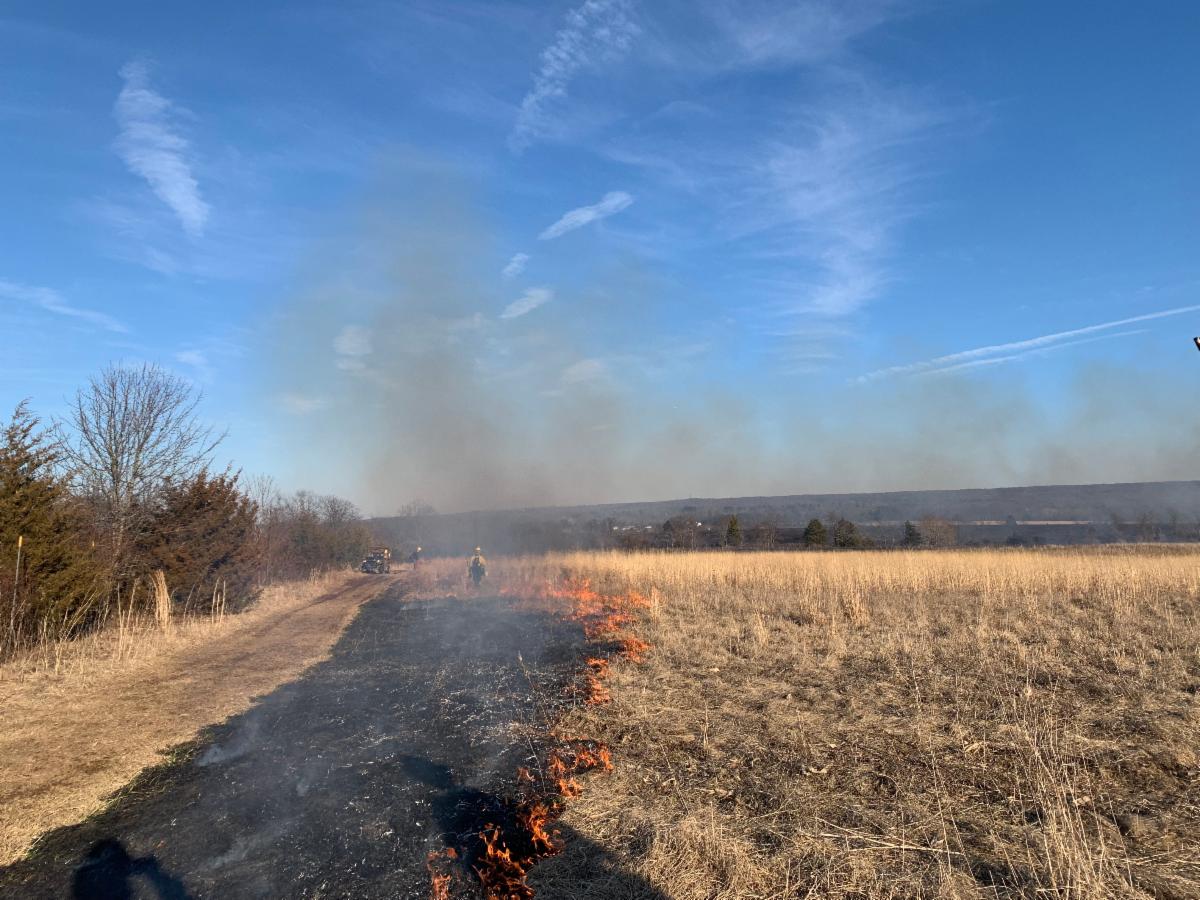
A note about our long-term restoration project at Cider Mill GrasslandsThe Cider Mill Grasslands are being renovated to improve pollinator, butterfly and bird habitat. Invasive plant species are throughout the fields and will be treated with herbicides over the weekend of May 29th. Stewardship staff will continue to closely monitor the preserve for invasive plant species and there will be further herbicide treatments in July and September. Following the initial treatment, the fields will be seeded with native, warm season grasses including little bluestem, big bluestem, and purpletop along with a cover crop of Virginia wild rye. This will provide better forage and shelter for wildlife over the long-term.The 90-acre Cider Mill Grassland Preserve is part of the NJ Natural Heritage Program’s designated “Amwell Valley Grassland Macrosite” which totals approximately 1,593 acres and is considered a prime example of agricultural grasslands in New Jersey. |
Fire is a stewardship tool used to manage habitats. Native Americans also utilized prescribed burns to reduce pests, increase grasses, and improve habitat for native plants and animals. A controlled prescribed burn is often used by conservation organizations throughout New Jersey to:Manage invasive plant speciesEncourage native plant growthEnrich soil nutrient availabilityReduce thatch from years of mowingManage insect populations (including ticks)
|
|
What’s Next for Cider Mill?
The long-term plan for stewardship is to closely monitor the preserve for invasive plant species and to seed native, warm season grasses such as little bluestem. This will provide better forage for wildlife such as grassland birds, butterflies and moths. The 90-acre Cider Mill Grassland Preserve is part of the NJ Natural Heritage Program’s designated “Amwell Valley Grassland Macrosite” which totals approximately 1,593 acres and is a prime example of agricultural grasslands in New Jersey.
After the Burn
Cider Mill is open to the public after the burn! Come out and see how the landscape has changed. The ground will be charred and you might notice a smoky smell in the air. You may also see birds picking at exposed seeds and insects on the ground. Come back throughout the spring to witness how the grasslands regrow as our stewardship team plants wildlife-supporting native seeds and continues to treat invasive plants.
|
| The ground is charred as the fire moves across the landscape. |
The Cider Mill Grassland Preserve is a 90-acre property in the heart of the agricultural landscape of the Amwell Valley. It slopes gently to the south, providing a view of the Sourland Mountain ridge. The Preserve is part of the NJ Natural Heritage Program’s designated “Amwell Valley Grassland Macrosite” which totals approximately 1,593 acres and is considered a prime example of agricultural grasslands in NJ.
|
|
###
BACKGROUND
D&R Greenway Land Trust, an accredited nonprofit, has saved over 22,000+ acres of New Jersey land since its founding in 1989. Preserving land for life and creating public trails grants everyone the opportunity to enjoy the great outdoors. The land trust’s preserved farms and community gardens provide local organic food for our neighbors—including those most in need. D&R Greenway’s strategic land conservation and stewardship combat climate change, protect wildlife, and ensures clean drinking water for future generations. D&R Greenway’s mission is connecting land with people from all walks of life.
D&R Greenway’s Johnson Education Center, home to its art galleries in Princeton, is currently closed to ensure health and safety due to COVID. Our outdoor trails and labyrinth are open. Visit our Facebook and Instagram pages and www.drgreenway.org to learn about the organization’s latest news and virtual programs. D&R Greenway Land Trust, One Preservation Place, Princeton NJ 08540. The best way to reach D&R Greenway staff is by sending an e-mail to info@drgreenway.org or by calling D&R Greenway at 609-578-7470.
|
|
|
|
|
|
|
|
|
|
|
|

